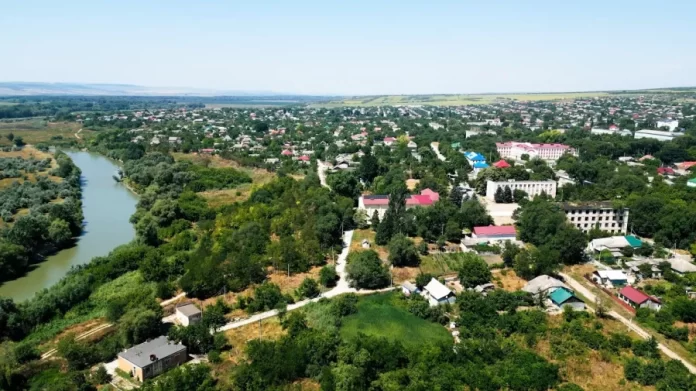The origins of Traian’s Wall, the birthplace of Ion Aldea Teodorovici, and the land Stephen the Great gifted to his servants—this is how the team of the project “Valea Prutului – Cradle of Romanian Civilization,” funded by the Department for Relations with the Republic of Moldova under the Romanian Government, came to know the town of Leova.
Just a few meters from the Prut River, loyalty was officially recorded in 1489. Legends say Voivode Stephen the Great bought the land with Tatar coins and gave it to his servants, Petru and Leova.
Here, we discovered one of the most mysterious natural monuments, nearly 2000 years old—the Traian’s Wall. People believe that this earthwork protected the locals from invaders, serving as a military fortification.
”The Traian’s Wall begins here, at the Prut River. To the east, it rises along Traian’s Wall Street, named in honor of this wall, through the city and into our fields in the district,” shares Viorica Antonovici, director of the Youth Naturalists’ Station in Leova.
To enhance the area, Leova is constructing a tourist complex named “Traian’s Wall” with funds from Europe. This complex aims to serve as an example of how to preserve historical remnants.
”The municipality has won the project for the Traian’s Wall tourist complex. We will create a lake here, uncover the local springs, and collect water from the Prut River. We will install resting cabins, umbrellas, catamarans, and small boats—everything needed for relaxation,” adds Viorica Antonovici.
FOR THE MOST IMPORTANT NEWS, FOLLOW US ON TWITTER!
The Museum of History and Ethnography in Leova houses around 11,000 objects collected from the people of the Prut Valley. The building once belonged to the college where the famous soprano Maria Biesu took her first steps into the world of music. Research shows that the cultural elements of Bessarabia have been preserved better in this locality than in other cities and villages in the Prut Valley.
”It all starts with the carpets. The carpets feature elements used by them and us, such as natural designs and geometric colors. They use wool that they process themselves, and the dyes come from nature, like peony, mint, and walnut onion skins. The colors they used for dyeing were readily available. We have tapestries that are used both by them and by us, as well as carpets with roses and irises,” explains Valentina Feodorova, the museum director.
The popular wedding attire from the Prut Valley around Leova, which is several hundred years old, is quite unique. Brides would sew the groom’s shirt, incorporating local ornaments. The museum in Leova houses such a shirt, which is over a century old and is one of its most valuable exhibits.
Not far from there stands a 20-meter oak tree that is several hundred years old. Some say that under its shade, Dimitrie Cantemir once rested, and the church built in 1818 is a national architectural monument of great importance.
Leova maintains constant collaborations with Romania, especially in the field of education. Students and teachers engage in experience exchanges and have cooperation agreements, while young people go to study at universities across the Prut River. Development projects are abundant, with the latest one valued at approximately 650,000 RON, aimed at renovating a kindergarten.
The results of the “Prut Valley – A Hearth of Romanian Civilization” survey, conducted in Leova by the research company IMAS on behalf of the “Prut Valley” project funded by DRRM, reveal that 59% of respondents believe that the political relations between Romania and Moldova are at a good or high level, while 51% view economic cooperation positively.
When asked whether the populations of Romania and Moldova are similar, 36% responded affirmatively. More than half of the interviewees, specifically 55%, wish for at least one family member to come from Romania.
About 44% of Leova residents have friends, acquaintances, or relatives in Romania and frequently cross the Prut River.


